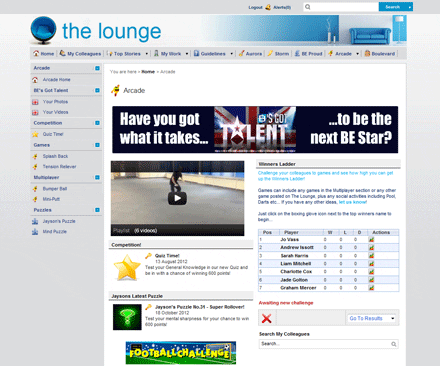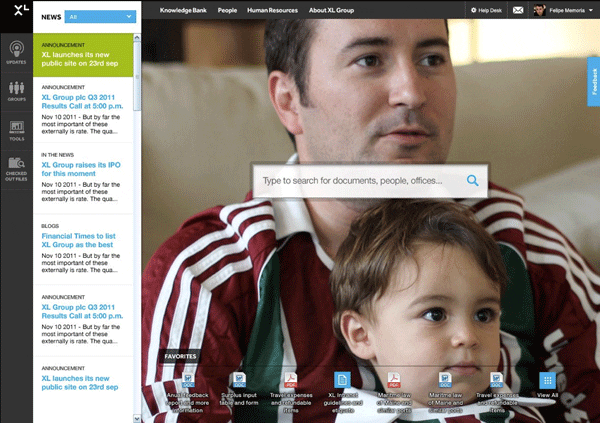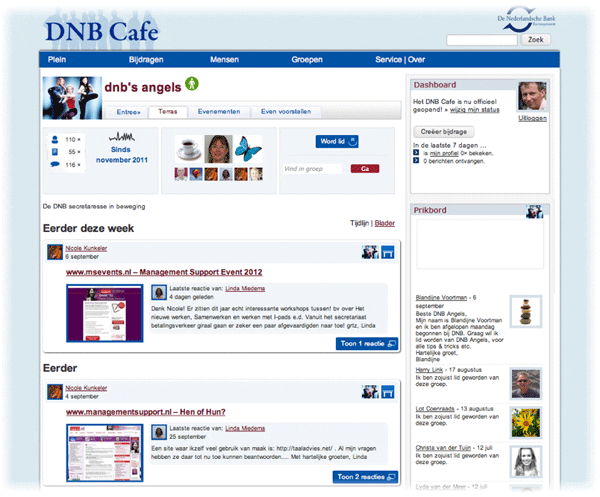Not long to go to enter My Beautiful Intranet 2012!
 We’re getting close to the deadline for our “My Beautiful Intranet (Goes Social)” competition and things are starting to hot up! Since our look at some of the best features of the early entries, we’ve had further fascinating submissions (some of which are detailed below) and we’re expecting a lot more entries before deadline day.
We’re getting close to the deadline for our “My Beautiful Intranet (Goes Social)” competition and things are starting to hot up! Since our look at some of the best features of the early entries, we’ve had further fascinating submissions (some of which are detailed below) and we’re expecting a lot more entries before deadline day.
So make sure you enter your social intranet! Unlike some other intranet contests, this only takes a few minutes to enter. Just submit up to three screenshots, one of which should be the homepage, and let us know in a paragraph or two why your intranet is social and beautiful. The screenshots will be available for all to view so please make sure that there’s nothing confidential that can’t be shared with the outside world.
Anybody can then vote for their favourite entry on the IBF website. The most popular entries from here will then be examined by our judging panel (who include DWG’s own usability guru Louise Kennedy and the entire Intranetizen team), and a winner announced in January. So if your intranet is as good as the ones below then make sure you enter.
Allowing non-business use to drive business use
Allowing non-business use on a social intranet can help drive adoption, which in turn can drive more business use. At first glance UK-based BusinessEnvironment have included a lot of non-business use – the intranet as branded as “The Lounge” for starters – and there are items relating to new non-smokers, a football challenge and even a dedicated area to games and competitions called “Arcade”. Despite these features according to BusinessEnvironment, 86% of communication on the intranet “relates to business issues” and 100% of employees have logged-in.

Encouraging employees to own the homepage: intranet as desktop
Extensive user-driven personalization on the homepage has always been a tricky to implement. It sounds great on paper with each user being able to customize the look and functionality in their own homepage, usually by selecting different widgets. But unfortunately value isn’t often realized because the adoption levels are invariably a huge disappointment.
However I love XL Group’s genuinely different take on personalization, where a user can add their own personal wallpaper as the intranet background and also their own favourite links. This unusual feature means that the intranet resembles much more a personal desktop rather than a traditional homepage. However I wonder if this feature is strictly speaking “social”? Does a personalized background count as user-generated content? I’m not sure, but I can imagine how this wallpaper feature can help employees feel a sense of ownership of the intranet, a successful step towards better adoption and putting people at the centre of the intranet.

The right social intranet to fit business purpose and organizational culture
Like any internal initiative or technology-related project, social intranets will not be successful unless there is a good business purpose for using them, and they are appropriate for an organizational culture. I like the way a knowledge-intensive organization like Dutch Central Bank appears to have focused on collaboration as the main value proposition of its social intranet with cross-divisional knowledge sharing, reduced meetings, project spaces, expertise location and the like amongst the benefits.
However I also like the informal style it has achieved – the intranet is branded as “DNB Café” – a very deliberate attempt to “balance the pretty formal identity of a central bank with social elements attracting an upcoming younger workforce.” With 70% of employees creating their own profiles within the first six months, the balance seems to be working.

How’s your social intranet?
So how does your social intranet compare? Does it tick the boxes for aesthetics, social features and good adoption? If it’s as good as some of the entries so far, or even better, then make sure you enter the contest. You’ve got until 23 November!
About the author
This is a guest post by Steve Bynghall. Steve was the content producer for IBF 24 2011 and helped research Paul Miller’s book “The Digital Workplace: How Technology is Liberating Work“. He is also a benchmarking evaluator and has written three research reports for IBF, and regularly blogs for DWF and IBF. Steve is the founder of Two Hives Ltd, a consultancy specializing in KM, collaboration and web-based projects. Steve previously worked at accountancy firm BDO in a variety of knowledge roles, including managing its global extranet programme. He has co-written a book on crowdsourcing with Ross Dawson titled “Getting Results from Crowds“. He tweets (less than he should do) at @bynghall.
Categorised in: Collaboration
